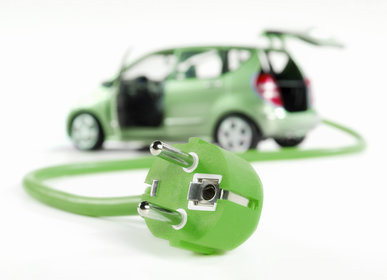
22/05/2018
Electric cars, all the figures of a growing market
Gennaro Speranza - Econometrica
Over three million EVs are currently circulating around the world, of which 1.3 million sold in 2017 alone, boosting the transition towards a more sustainable mobility. China, Europe and the US are the largest markets. By 2030 eight out of every ten new vehicles will be battery-powered. However, a few loose ends need to be tied up first.
The over three million electric cars reportedly circulating around the globe in 2017 highlight the significant efforts made over the last decade by governments as well as the automotive industry. Ambitious goals, political strategies to support sustainable mobility, research and development, are all playing a crucial role in boosting the transition towards electric mobility. Let us take a closer look at the current scenario and what we can expect in the near future.
Growing sales
Over 1.3 million new EVs were sold in 2017 alone (taking both plug-in hybrids and full-electric into consideration). Despite being only 1% of the global market, this figure still represents a terrific boost over 2016 (+58%). According to EV-Volumes, a Swedish analytic company, if current trends continue, by 2030 eight out of ten new vehicles will be electric. As far as markets, Asia leads the way with China taking the lion’s share: last year new EV registrations were 777,000 (+53% over 2016). In an attempt at not being outdone, the US market too recorded a 27% increase over the previous year with 200,000 new registrations. What about Europe? In EU/Efta countries EV sales stood at around 287,000 new registrations (a 38.7% increase over 2016). This means that in the “old continent”, one out of 54 new deliveries was electric (in 2016 the ratio was 1 in 72). Looking at the Italian market, the number of electric vehicles sold in our country was 4,827: almost twice as much compared to 2016 (2,819), although, in all fairness, this has brought little or no changes to the market share: in Italy EVs still make up only 0,2% of the total domestic market. Rather insignificant numbers if we were to compare them with Germany (54,617 new registrations in 2017 alone), the UK (36,835), France (36,835) and Norway, which tops the continent with 62,313 units sold.
The race is on
Therefore, despite encouraging figures, the real electric revolution is expected during the next decade, according to forecasts and insiders. PwC forecasts, which focused on the world top markets (China, Europe and the United States), are particularly optimistic, and what they tell us is that by 2030 these markets will be literally invaded by electric cars with numbers soaring to a staggering 164 million vehicles in circulation. The same study explains that EVs are bound to increase in three different stages; rather slowly until 2020 reaching a total of 7.6 million units worldwide; the following five years will experience an initial acceleration that will bring the total to over 41 million, setting the scene for the stratospheric growth expected between 2025 and 2030 when the 164 million threshold will be reached.
What about recharging networks?
Recharging stations are clearly expected to grow hand in hand with the soaring numbers of EVs. According to the most recent data by Energy & Strategy Group, the total number of recharging stations worldwide - both public and private – was 1,45 million at the end of 2016, +81% over the 800,000 stations in 2015 and about 73 times more compared to the 20,000 registered in 2010. This growing trend was fuelled mainly by private recharging station, which make up the vast majority in the sector, leaving a rather small slice of the pie to the public sector, only 13%.
Of these, 31% are found in China, followed by the United States (17%), Norway (12%) and Sweden (10%). In Europe, a total of 70,000 public charging stations have been installed, a number destined to grow significantly over the next few years thanks to the European Dafi directive (Alternative fuel infrastructure directive), which has been sponsoring the widespread use of charging stations all over Europe since 2014. As far as our country is concerned, public charging stations found throughout the country are only 1,750, rather inadequate when compared to the growing number of electric vehicles. However, the market is about to go through a phase of strong expansion.
In the framework of the National Infrastructural Plan for recharging electrically powered vehicles (the so-called PNIRE), drawn up by the Ministry of Infrastructures and Transport, 33.3 million euro have been allocated for setting up new charging stations. Within 2020, in fact, between 4,500 and 13,000 new normal-power refuelling points (i.e. with a power of 22 kW or less) and a further 2,000 to 6,000 high-power charging points (i.e. with a power of more than 22 kW) should be installed throughout the country.
The battery issue
The fact that the car market is quickly moving towards an increasingly electric mobility is no secret, although a few obstacles need to be overcome before the industry can get to the heart of the electric revolution. Among the obstacles two deserve a special mention, the high price of electric vehicles (due mainly to the cost of batteries, which make up about 40% of the total price of the vehicle) and the limited battery life. Technological progress is a crucial factor if the industry aims to guarantee the same running costs of traditional combustion engines and greater mileage. However, according to a recent report by Bloomberg New Energy Finance, the average price of a lithium battery, though still quite high, has dropped in the last few years, going from 1,000 dollars per kWh in 2010 to 209 dollars per kWh in 2017 (a 79% drop). The trend should continue also in the future and prices are expected to fall even further in coming years, and within a decade electric vehicles will be able to compete with traditional thermal units. Furthermore, batteries will be less bulky, lighter and faster to recharge.
An opportunity not to be missed
EVs will therefore play an increasingly central role in tomorrow’s mobility. The automotive industry is not be the only one gearing up to capitalize on the opportunities that this transformation will bring, the aftermarket is ready to do just the same. On the one hand, car manufacturers will be called upon to invest more resources in research and development developing cars and batteries able to guarantee better performance. On the other hand, as far as the aftermarket sector is concerned, the need to upgrade equipment, tools and the expertise in the sector, will become all the more urgent. Garages and specialists will need to radically modify their working methods and update their know-how before "getting their hands dirty" on different repair and maintenance needs. As the electric revolution knocks at the door the key word for the whole sector is: Specialize!
Growing sales
Over 1.3 million new EVs were sold in 2017 alone (taking both plug-in hybrids and full-electric into consideration). Despite being only 1% of the global market, this figure still represents a terrific boost over 2016 (+58%). According to EV-Volumes, a Swedish analytic company, if current trends continue, by 2030 eight out of ten new vehicles will be electric. As far as markets, Asia leads the way with China taking the lion’s share: last year new EV registrations were 777,000 (+53% over 2016). In an attempt at not being outdone, the US market too recorded a 27% increase over the previous year with 200,000 new registrations. What about Europe? In EU/Efta countries EV sales stood at around 287,000 new registrations (a 38.7% increase over 2016). This means that in the “old continent”, one out of 54 new deliveries was electric (in 2016 the ratio was 1 in 72). Looking at the Italian market, the number of electric vehicles sold in our country was 4,827: almost twice as much compared to 2016 (2,819), although, in all fairness, this has brought little or no changes to the market share: in Italy EVs still make up only 0,2% of the total domestic market. Rather insignificant numbers if we were to compare them with Germany (54,617 new registrations in 2017 alone), the UK (36,835), France (36,835) and Norway, which tops the continent with 62,313 units sold.
The race is on
Therefore, despite encouraging figures, the real electric revolution is expected during the next decade, according to forecasts and insiders. PwC forecasts, which focused on the world top markets (China, Europe and the United States), are particularly optimistic, and what they tell us is that by 2030 these markets will be literally invaded by electric cars with numbers soaring to a staggering 164 million vehicles in circulation. The same study explains that EVs are bound to increase in three different stages; rather slowly until 2020 reaching a total of 7.6 million units worldwide; the following five years will experience an initial acceleration that will bring the total to over 41 million, setting the scene for the stratospheric growth expected between 2025 and 2030 when the 164 million threshold will be reached.
What about recharging networks?
Recharging stations are clearly expected to grow hand in hand with the soaring numbers of EVs. According to the most recent data by Energy & Strategy Group, the total number of recharging stations worldwide - both public and private – was 1,45 million at the end of 2016, +81% over the 800,000 stations in 2015 and about 73 times more compared to the 20,000 registered in 2010. This growing trend was fuelled mainly by private recharging station, which make up the vast majority in the sector, leaving a rather small slice of the pie to the public sector, only 13%.
Of these, 31% are found in China, followed by the United States (17%), Norway (12%) and Sweden (10%). In Europe, a total of 70,000 public charging stations have been installed, a number destined to grow significantly over the next few years thanks to the European Dafi directive (Alternative fuel infrastructure directive), which has been sponsoring the widespread use of charging stations all over Europe since 2014. As far as our country is concerned, public charging stations found throughout the country are only 1,750, rather inadequate when compared to the growing number of electric vehicles. However, the market is about to go through a phase of strong expansion.
In the framework of the National Infrastructural Plan for recharging electrically powered vehicles (the so-called PNIRE), drawn up by the Ministry of Infrastructures and Transport, 33.3 million euro have been allocated for setting up new charging stations. Within 2020, in fact, between 4,500 and 13,000 new normal-power refuelling points (i.e. with a power of 22 kW or less) and a further 2,000 to 6,000 high-power charging points (i.e. with a power of more than 22 kW) should be installed throughout the country.
The battery issue
The fact that the car market is quickly moving towards an increasingly electric mobility is no secret, although a few obstacles need to be overcome before the industry can get to the heart of the electric revolution. Among the obstacles two deserve a special mention, the high price of electric vehicles (due mainly to the cost of batteries, which make up about 40% of the total price of the vehicle) and the limited battery life. Technological progress is a crucial factor if the industry aims to guarantee the same running costs of traditional combustion engines and greater mileage. However, according to a recent report by Bloomberg New Energy Finance, the average price of a lithium battery, though still quite high, has dropped in the last few years, going from 1,000 dollars per kWh in 2010 to 209 dollars per kWh in 2017 (a 79% drop). The trend should continue also in the future and prices are expected to fall even further in coming years, and within a decade electric vehicles will be able to compete with traditional thermal units. Furthermore, batteries will be less bulky, lighter and faster to recharge.
An opportunity not to be missed
EVs will therefore play an increasingly central role in tomorrow’s mobility. The automotive industry is not be the only one gearing up to capitalize on the opportunities that this transformation will bring, the aftermarket is ready to do just the same. On the one hand, car manufacturers will be called upon to invest more resources in research and development developing cars and batteries able to guarantee better performance. On the other hand, as far as the aftermarket sector is concerned, the need to upgrade equipment, tools and the expertise in the sector, will become all the more urgent. Garages and specialists will need to radically modify their working methods and update their know-how before "getting their hands dirty" on different repair and maintenance needs. As the electric revolution knocks at the door the key word for the whole sector is: Specialize!










